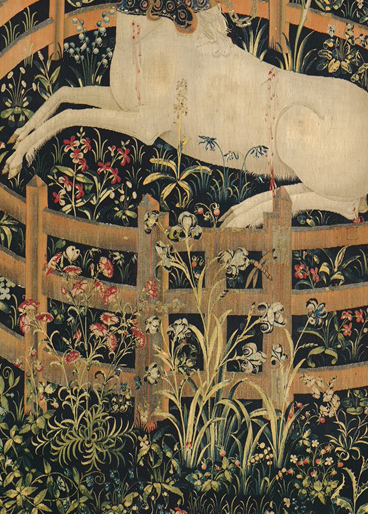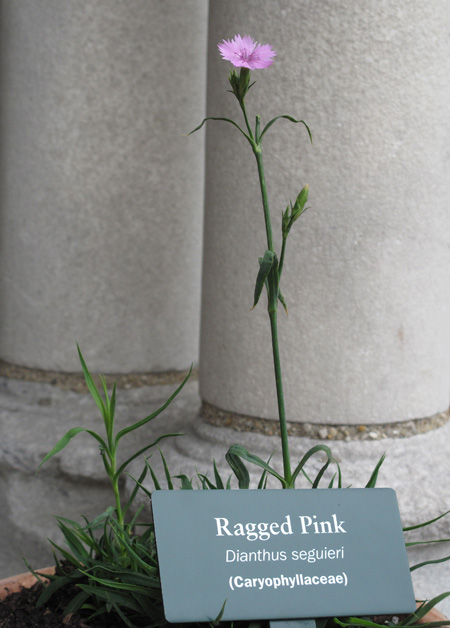The Pink Reincarnate
The Unicorn in Captivity (from the Unicorn Tapestries) (detail), 1495???1505. South Netherlandish. The Metropolitan Museum of Art, New York, Gift of John D. Rockefeller Jr., 1937 (37.80.6). See Collections to learn more about this work of art. The red-flowered plant that appears to the left of the blue iris, just outside the Unicorn’s enclosure, is a carnation, a doubled garden form of the clove pink. Unlike the iris, which was already of ancient cultivation, these garden pinks were developed in the later Middle Ages.
LUXURIOUS man, to bring his vice in use,
Did after him the world seduce,
And from the fields the flowers and plants allure,
Where Nature was most plain and pure.
He first inclosed within the gardens square
A dead and standing pool of air,
And a more luscious earth for them did knead,
Which stupefied them while it fed.
The pink grew then as double as his mind;
The nutriment did change the kind.
With strange perfumes he did the roses taint;
And flowers themselves were taught to paint.???Andrew Marvell (1621???1678), “The Mower Against Gardens,” Lines 1???12
This complaint, in which a mower laments that the sweet fields have been forsaken for the artificialities of the English Renaissance garden, was penned by Andrew Marvell, the seventeenth-century Metaphysical poet, who wrote as famously and well of gardens and their plants as he did of fields and wildflowers. In “The Mower Against Gardens,” Marvell chooses the doubled pink, or carnation, as the floral emblem of man???s fall from nature and agriculture into horticulture and duplicity. (A reading of the entire poem is available on YouTube.)


